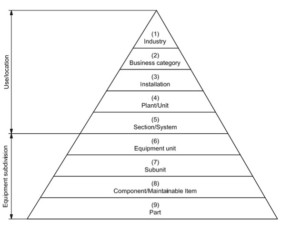Reduce the Variability in Your Work Routines and Procedures
 Based on our understanding of the six failure patterns, we can see that there is a large probability of failure when the equipment is first installed and started up. One of the Englisch causes of this increase in probability is the fact that the equipment was not installed or maintained correctly. This may be due to the installer or maintainer not using or following procedures. Having procedures is the first step to reducing these failures, but the procedures must be written in a clear, easy to follow manner. When writing procedures, it is critical to ensure that there are no interpretations in the written instructions. How can this be accomplished?
Based on our understanding of the six failure patterns, we can see that there is a large probability of failure when the equipment is first installed and started up. One of the Englisch causes of this increase in probability is the fact that the equipment was not installed or maintained correctly. This may be due to the installer or maintainer not using or following procedures. Having procedures is the first step to reducing these failures, but the procedures must be written in a clear, easy to follow manner. When writing procedures, it is critical to ensure that there are no interpretations in the written instructions. How can this be accomplished?
The universal language for aviation is english, which is considered very safe and reliable. How has this industry been able to overcome the fact that many of the people involved in aviation are not native English speakers? How does a large company such as Boeing supply aircraft all over the world and the customers perform the maintenance in a consistent manner? The aviation and defense industries use a controlled language by the name of Simplified Technical English.
What is Simplified Technical English?
Simplified Technical English is a controlled version of English, that is designed to help the users of English-language maintenance documentation understand what they read. Technical writing can be complex and difficult to understand even for native English speakers. Complex writing can be misunderstood, which may lead to accidents or premature failures. Simplified Technical English makes procedures easy to understand and follow, eliminating language issues and reducing premature and maintenance induced failures.
Simplified Technical English provides a set of Writing Rules and a Dictionary of controlled vocabulary. The Writing Rules cover grammar and style. The Dictionary specifies the words that can be used and those that can’t be used. For the words selected, there is only one word for one meaning and one part of speech for one word. Some of the benefits of Simplified Technical English may include;
- Reduce ambiguity
- Improve the clarity of technical writing, especially procedural writing
- Improve comprehension for people whose first language is not English
- Improve Reliability concerns of maintenance and assembly by reducing their probability to introduce defects
The Simplified Technical English specification is not easy to learn, but there are training and software available (if you are interested in this standard, please visit the ASD Simplified Technical English website). The detailed contents of the Simplified Technical English specification will not be covered, but instead, the rest of the post will cover what you can immediately do to make your procedures more readable and drive reliability.
Writing Procedures Using Simplified Technical English
So without becoming an expert in Simplified Technical English, how can you begin to write better procedures? You can begin with some basic writing practices and by reviewing the procedures before it issued. Some of the basic practices to use when writing procedures include;
- Use short sentences. (The recommended maximum is 20 words in a procedural sentence and 25 words in a descriptive sentence.)
- Restrict noun clusters to less than 3 nouns
- Restrict paragraphs to less than 6 sentences
- Avoid slang or jargon
- Avoid the passive voice
- Be as specific as possible
- Use articles such as “a/an” and “the” wherever possible
- Use simple verb tenses (past, present, and future)
- Write sequential steps as separate sentences
- Put commands first in warnings and cautions, with the exception of conditions
- For example, write Make sure that the valve is open. Do not write Make sure the valve is open.Use the conjunction that after subordinate clauses that use verbs such as make sure and show.
- Introduce a list item with a dash (hyphen).
Once the procedure is written, be sure to review and delete any information which is not relevant (i.e. Instead of synthetic lubricating oil, use only). well-written should help in eliminating any interpretation and driving clarity.
Here is an example of how the wording of a procedural step could be open to interpretation. The task “Replace the filter” could mean either of the following:
- Put back the filter that you took out.
- Install a new filter.
Now you can see how one person may perform a task and how another would perform it differently. Once the task is clear, a technical specification should be added to ensure the task is performed to a standard such as;
- Tighten to 15 ft-lbs
The end result of ensuring the task is clear, and a specification is present is “Install a new filter and tighten to 15 ft-lbs” This task is simple, clear and easy to understand.
When following these basic steps a well written procedure will be developed to ensure clarity and repeatability, thereby reducing maintenance induced failures. Do you use a Simplified Technical English or a form of it in your procedures or job plans? If not, how are you actively working to reduce maintenance induced and start-up related failures?
Remember, to find success, you must first solve the problem, then achieve the implementation of the solution, and finally sustain winning results.
I’m James Kovacevic
Eruditio, LLC
Where Education Meets Application
Follow @EruditioLLC
References;








 Why is that some organization seem to break the reactive cycle and others don’t? After all most organizations have a
Why is that some organization seem to break the reactive cycle and others don’t? After all most organizations have a 


 Ever wonder how some of the worst industrial disasters occur? It is usually the result of multiple failures. Failure of the primary system and failure of the protective systems. Ensuring the protective system(s) are not in a failed state should be of utmost importance to any organization. But how often should we test the protective systems to ensure the required
Ever wonder how some of the worst industrial disasters occur? It is usually the result of multiple failures. Failure of the primary system and failure of the protective systems. Ensuring the protective system(s) are not in a failed state should be of utmost importance to any organization. But how often should we test the protective systems to ensure the required 